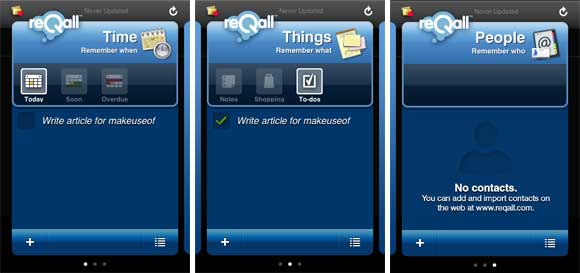
Mark Dadswell / Getty Images
Kobe Bryant posing for a photograph at the Olympic games has become a common site in Beijing. For all the shoring up of the U.S. reputation on the basketball court in these Games, of perhaps even greater value is the improvement in the of the program's image on the international scene with the exemplary behaviour of this year's team.
What's being redeemed isn't only their record but their global reputation, which had suffered in the years since 1992's Dream Team.
Mark Heisler
August 18, 2008
Beijing As "cheesy" as Nike's nickname for this team may be -- as Nike spokesman Kobe Bryant keeps noting -- the U.S. has more to
redeem than its primacy in basketball.
Of course, sometimes when you lose, you really win, as Gloria also said. This U.S. team may not lose any games, but if it lost them all, it already has won.
If we never see another Dream Team, these U.S. players have dialed the clock back to 1992 in terms of the respect they're extending and receiving.
It's more than the postgame pictures with the other team, now choreographed by the NBA Entertainment crew shooting that documentary for Nike.
The same people who rolled their eyes at the Americans' bad manners for years say this team is different.
"I think they've been outstanding, the way they've conducted themselves, [although] they may be coming from a fairly low base from some of their predecessors in the way they've gone about it," former Australia star Andrew Gaze says, laughing.
"I think also off the floor, seeing the guys, the way they interact with the public, the reporters -- you look at Kobe Bryant, every photo they want taken, he's been obliging.
"I think they've really taken on the challenge, not only to resurrect the reputation of what goes on the court but what goes off the court."
If this is a mellow U.S. team compared with some -- like the 1994 world championship squad that had one of its players, Larry Johnson, named to the All-Principal's-Office Team -- it's not just a fortunate, spontaneous development.
It came from the top, from managing director Jerry Colangelo and Coach Mike Krzyzewski, who brought in Triano, a Toronto Raptors assistant, not only to coach the U.S. Select team but to tell the big team what the world thought of them.
"We have to understand our responsibility," Krzyzewski says. "We don't have to celebrate individual things. They act like they've done it before, which they have."
Let's just say it's been a long time coming.
When pro players made their Olympic debut in 1992, it looked like a win-win proposition for the NBA, which got to use some downtime over the summer to dress its product in red, white and blue and present it to a huge worldwide audience.
The Dream Team lived up to every hope, rolling over opponents who were dazzled to be on the same floor, right down to Angola's Herlander Coimbra, who asked to pose for a picture with Charles Barkley after the game in which Barkley elbowed him.
The problem quickly became that no subsequent U.S. squad could live up to the Dream Team's esprit, excellence or popularity, which they all quickly tired of hearing about.
Two years after the Dream Team, the U.S. sent its "Young Guns" to Toronto for the 1994 world championships, which they won in appalling fashion.
Bristling at comparisons to what was being called Dream Team I, the young guns played casually, puts their heads back and howled, struck poses and talked trash.
Said Gaze, then still playing: "I don't know if 'vile' is the right word, or 'disgusting.' There should be at least some pleasure in playing the game, some dignity."
Replied Johnson: "I didn't come here to make friends. I've got enough friends. We came here to kick some behind, and that's what we're doing. We're basically taking a lot of countries to school."
That ended the practice of tacking on roman numerals to the name "Dream Team." Having wound up with something more like Hell's Angels, horrified NBA officials made sure that was the last international competition for Johnson and fellow gangstas Derrick Coleman and Shawn Kemp.
The 1996 Olympic team in Atlanta was well-behaved but bored. Interest waned. The big story in U.S. basketball was the women, who were about to get their own league with the WNBA.
The attitude resurfaced in 2000 in Sydney, where demonstrative Vince Carter had run-ins with Gaze and Shane Heal, Australia's little point guard, and Aussie fans made derisive chants.
The U.S. won the gold medal but only after close calls against Lithuania and France, signaling the debacles to come.
Colangelo, taking over after the 2004 Athens train wreck, had a wide array of friends from abroad -- including his daughter-in-law, a former Italian freelance writer -- and knew only too well what the world thought.
"I really do believe from everything I know from people I respect, the people in the world thought the American teams didn't respect them," Colangelo says. "Didn't respect them as teams, as individuals, arrogant, that kind of thing. And that had to end. . . .
"From those first meetings with players, I said, 'Look, this is what people think of us. We have to change this. We have to come in with a whole new attitude. We have to show respect for our country, show respect for our team, show respect for our opponents. And anything less than that's not going to fly.' "
This is still sports, so the U.S. team can't win unless it wins, but its most important legacy for me will be the standard it set for a U.S. team's behavior.
Long may it wave.
mark.heisler@latimes.com












 Today, the news broke that the HTC Dream, the first handset to run Android (aka "the Google Phone") has been approved by the FCC. In the documents provided, it appears that we have now a release date for this highly anticipated phone: November 10th, 2008.
Today, the news broke that the HTC Dream, the first handset to run Android (aka "the Google Phone") has been approved by the FCC. In the documents provided, it appears that we have now a release date for this highly anticipated phone: November 10th, 2008.
 Image courtesy of
Image courtesy of 




























